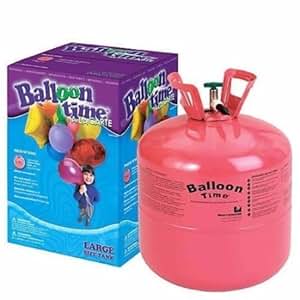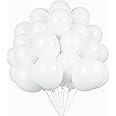Helium balloons are often a staple at celebrations, from birthday parties to weddings and grand openings. Their buoyant nature and vibrant colors add a whimsical touch to any event. However, while they are fun and entertaining, it is essential to understand the science behind helium balloons, their environmental impact, and safety tips for handling them. This article will explore fascinating facts about helium balloons, as well as crucial safety precautions to ensure a fun and responsible balloon experience.
What is Helium?

Helium is the second most abundant element in the universe, primarily produced through nuclear fusion in stars. On Earth, it is found in natural gas deposits and is extracted through various methods. Helium is a colorless, odorless, non-toxic gas that is lighter than air, which is why it is used to fill balloons. Here are some intriguing facts about helium:
- Inert Gas: Helium is a noble gas, meaning it does not easily react with other elements or compounds.
- Low Density: Helium is significantly less dense than air, allowing balloons filled with it to rise.
- Cooling Properties: Helium is used in cryogenics and has the lowest boiling point of all elements.
- Sound Alteration: Inhaling helium can temporarily change the pitch of a person’s voice, creating a funny and entertaining effect.
The Science Behind Helium Balloons

Helium balloons float due to the principle of buoyancy, which states that an object will rise in a fluid if it is less dense than the fluid. When a helium-filled balloon is released into the atmosphere, the surrounding air pushes up against the balloon, causing it to ascend. However, as the balloon rises, the external pressure decreases, allowing the helium inside to expand. Eventually, this expansion can lead to the balloon bursting or losing its lift.
Fun Uses for Helium Balloons

Helium balloons are not just for decoration; they have various applications and uses. Here are some fun and creative ways to use helium balloons:
- Advertising: Businesses often use helium balloons for promotional purposes, creating eye-catching displays that attract customer attention.
- Art Installations: Artists utilize helium balloons in innovative installations to create interactive and dynamic art pieces.
- Scientific Research: Researchers use helium balloons in meteorology to carry instruments into the atmosphere for weather data collection.
- Party Games: Helium balloons can be used in games such as balloon darts or balloon races, adding excitement to any gathering.
Environmental Impact of Helium Balloons
While helium balloons are fun, they also pose environmental risks. When released into the atmosphere, they can travel significant distances before eventually descending back to Earth. Here are some environmental concerns associated with helium balloons:
- Wildlife Hazards: Balloons can be ingested by marine and terrestrial animals, leading to injury or death.
- Pollution: Deflated balloons can contribute to litter, impacting ecosystems and landscapes.
- Helium Scarcity: Helium is a finite resource. Overuse for non-essential purposes can deplete natural reserves that are crucial for medical and scientific applications.
Safety Tips for Helium Balloons

To ensure a safe and enjoyable experience with helium balloons, it is essential to follow specific safety tips. Here are some key precautions:
- Supervise Children: Always supervise children with helium balloons to prevent choking hazards and ensure they do not release balloons outdoors.
- Avoid Helium Inhalation: Inhaling helium can lead to asphyxiation. It is important to educate children and adults about the risks of inhaling helium for voice alteration.
- Secure Balloons: Keep helium balloons tied and secured to prevent them from floating away. Use weights to anchor helium-filled balloons at events.
- Dispose Properly: Dispose of deflated balloons responsibly. Cut them into small pieces and throw them in the trash to minimize environmental impact.
- Do Not Release: Avoid releasing helium balloons into the air. Instead, consider using biodegradable alternatives or restrict balloon use to indoor events.
Case Studies: The Impact of Balloon Releases

Several incidents have highlighted the adverse effects of balloon releases on wildlife and the environment. One notable case occurred in 1986 when thousands of balloons were released in a promotional event in New Jersey. The balloons ended up in the Atlantic Ocean, where they were consumed by sea turtles and other marine animals, leading to distress and death among the wildlife.
In another incident, an environmental organization conducted a study on balloon litter along coastlines and found that balloons were one of the top items collected during clean-ups. These case studies exemplify the importance of responsible balloon use and the need for greater awareness of their environmental impact.
Alternatives to Helium Balloons

As concerns about the environmental impact of helium balloons grow, many people are seeking alternatives. Here are some creative options:
- Air-Filled Balloons: Instead of helium, use air-filled balloons for decorations. They can be inflated with a pump and still look festive.
- Biodegradable Balloons: Consider using biodegradable balloons made from natural latex that decompose over time, minimizing environmental impact.
- Reusable Decorations: Invest in reusable decorations such as banners and fabric balloons that can be used for multiple events.
- Lightweight Decorations: Explore alternatives like paper lanterns or hanging paper decorations that do not require helium.
Helium balloons bring joy and excitement to various celebrations, but it is crucial to recognize their potential environmental impacts and safety concerns. Understanding the science behind helium, exploring fun uses, and adhering to safety guidelines will help ensure a responsible and enjoyable experience. By considering alternatives and being mindful of balloon disposal, we can enjoy the beauty of helium balloons while protecting our planet and its wildlife. Remember, a little knowledge and responsibility go a long way in making our celebrations both fun and safe!


